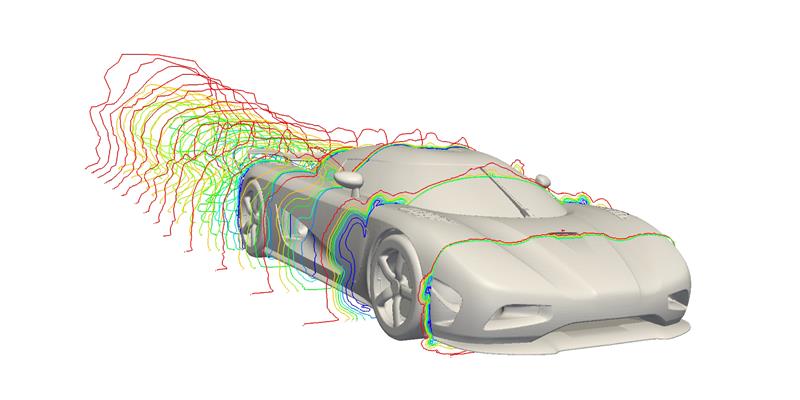In what is a highly competitive world, HPC is being seen as a ‘game changer’ and the market is seeing steady growth. According to research from market forecasting consultancy IPC, the HPC market could be worth in excess of $31billion by 2019, cutting as it does across many sectors including academia, government and industry.
Some specific areas that have shown great benefit from HPC include life sciences, manufacturing, oil and gas, weather modelling and prediction.
Traditionally viewed as a specialised back-room art, HPC is fast becoming a strategic technology that is being used by a growing range of sectors to remain competitive.
So is HPC helping to fuel a recovery in manufacturing and virtual product development?
While HPC is being used to power computer aided engineering and analysis solutions among Tier One manufacturers – where its use has grown apace – its adoption among small to medium sized manufacturers (SMEs) remains limited. Understanding the various technologies isn’t always easy, neither are the advantages or costs associated with HPC.
“For many companies, supercomputing is associated with brilliant scientists working in laboratories, but that view is beginning to change,” explains Professor Mark Parsons, pictured below, executive director and associate dean for e-Research at the Edinburgh Parallel Computing Centre (EPCC) in Edinburgh University.
“We’re seeing HPC becoming more mainstream and it’s being adopted by a growing number of companies,” he continues. “EPCC was set up in 1990 and, since then, we have done numerous projects with a growing list of companies.”
Prof Parsons joined EPCC in 1994 and has since worked on a number of industrial contracts.
“We started with a core team of four or five people and our work, initially, was driven almost entirely by government funding. Over the years, we spun out a company successfully and, despite going through a difficult period in the mid to late 1990s when activity collapsed and we had to cut staff numbers from more than 100 to less than 10, we have seen a marked recovery in the past few years.” Employment is now back to more than 100 people and EPCC runs nearly all the UK’s HPC resources.
Working with industry has been key to the centre’s success; EPCC is funded solely by the service contracts it has won.
“While we don’t receive core funding, it has meant much greater freedom for us to ‘do stuff’,“ concedes Prof Parsons. “While we may have the freedom to go out and work with industry to make money, we are aware that we have an obligation to help the broader economy.”
Fortissimo
While the EPCC was focused on the domestic economy, it was keen to extend its role to the European level.

“The Fortissimo project is about doing what we do, but at the EU scale,” says Prof Parsons. “Most countries have a national HPC service and the idea behind Fortissimo was to stimulate the development of better products and services by bringing those resources and knowledge together.”
Fortissimo is part of the EC’s I4MS initiative, set up to help SMEs to access HPC across Europe and to strengthen the competitiveness of European businesses.
“A growing number of SMEs rely on modelling and simulation for their business,” explains Prof Parsons, “and we felt that they would benefit from improved access to HPC.”
Many larger industries are putting pressure on their supply chain to use HPC services and products, but the cost of owning and maintaining these systems is considerable and, for many companies, it is not affordable.
“It’s certainly not cheap,” Prof Parsons notes. “Simple projects can require many thousands of 3D CAD models and you find, as I have over the past 20 years, that when you talk to SMEs about spending thousands of pounds, they need to be convinced that investing in simulation software, rather than in new production equipment for example, is the best use of limited resources.
“Fortissimo was designed to try and tackle this. Not only does it allow smaller businesses to access HPC resources, it also affords them links to HPC and simulation experts from across Europe who can help them get the best out of their systems. Companies can, via the cloud, access computationally intensive digital simulations.
“Computers are becoming more powerful and the benefits they can offer are becoming increasingly apparent.”
Advanced simulations are becoming more important to a growing number of industrial sectors, Prof Parsons believes, adding: “Businesses, which otherwise could not afford to run advanced simulations, should be given the necessary tools and access.”
One stop shop
When Fortissimo was established in 2013, coordinated by Edinburgh University, it had partners that included manufacturing companies, application engineers, IT solution providers and cloud service providers from 14 European countries.
“We wanted to create a ‘one stop shop’ in order to simplify the provision of tools and services,” says Prof Parsons. “Simulation requires enormous amounts of computing power and, while large businesses have that capability, we wanted to be able to extend those opportunities to smaller businesses.”
Through funded experiments, Fortissimo has helped SMEs to take advantage of the business benefits enabled through HPC technologies.
“Since it was established, the project has helped more than 50 European SMEs to improve their business, increase efficiency or simply save money,” he adds.
The project’s goal was to create a viable and commercially sustainable ecosystem. Earlier this year, the partners launched Fortissimo 2 with a call for HPC-Cloud based application experiments.
“Over its life, Fortissimo 1 has worked with SMEs and the projects tended to be based on smaller experiments probably costing no more than £250,000. Fortissimo 2 is intended to extend this project and we are already working on 25 new projects,” Prof Parsons explains.
This latest round of projects has a particular focus on the simulation of physical processes of high performance data analytics.
At the core of Fortissimo 2 are three tranches of application experiments driven by the needs of small businesses, bringing together companies and businesses from across the value chain. “Our aim is to develop new and improved design processes, products and services,” says Prof Parsons.

Success
One significant success for the Fortissimo project is the development of One:1 – the first production ‘megacar’ – by Koenigsegg, the Swedish based designer and manufacturer of high performance vehicles. The design of high end vehicles depends on the accurate prediction of air flow and, for a company like Koenigsegg, that usually requires the use of either advanced simulation or extensive wind tunnel tests, both of which would normally be prohibitively expensive.
“By partnering with Fortissimo, Koenigsegg could access the ICON Cloud-based HPC service for a fraction of the cost of running its own system,” explains Prof Parsons. “By using HPC, Koenigsegg didn’t have to use wind tunnel testing in the development of One:1.”
Fortissimo’s services not only helped to reduce development costs, but also allowed the car to be brought to market more quickly than would have been the case using traditional methods.
“According to the company, it saw a 30% reduction in time-to-market, compared to previous projects,” says Prof Parsons, “and this is just one of the project’s success stories.
“The project has helped numerous companies to improve time to market, reduce costs and improve the quality of their offerings through greater accuracy and fidelity of their simulations.”
Since most modern HPC hardware is based on commodity processors and components, there is no longer the need for specialised processors.
“Almost all HPC systems are based on commodity processors from Intel, AMD or IBM,” explains Prof Parsons. However, in many HPC systems, accelerators or GPUs help to speed applications.
The total amount of usable memory is critical. “Most HPC users will say the bigger, the better when asked about the size of system memory,” according to Prof Parsons.
Usable memory size is often an enabling factor for many large HPC applications, as is efficient disk storage. As many HPC applications scale, they often require large amounts of storage for input data, intermediate results, and output data.
“The costs are not insignificant,” says Prof Parsons.
Both the automotive and aerospace industries use simulation in lieu of, or in addition to, physical testing. Scalability is a critical issue when it comes to delivering efficient turnaround times, especially when each project could be involving hundreds of jobs to fully explore a design.
“Predictive simulation is becoming more important as manufacturers use computer simulation to predict the performance of a product before it has been designed. These industries are using so many new materials that simulation is crucial to understanding how they will behave.”
At the end of October 2016, Fortissimo launched the Fortissimo Marketplace, a platform developed for brokering HPC services.
“Today, we have more than 139 partners and operate in more than 19 European countries. Fortissimo is working and we intend with the Marketplace to make it even easier for SMEs to access and use HPC services,” Prof Parsons notes.
According to IDC, $1 spent on HPC sees an average return of revenue of more than $356 and $38 in profits.
“The Marketplace was conceived to take the complexity out of procuring HPC services and to allow SMEs to achieve those kinds of benefit. Through turnkey packages or Fortissimo’s matching services, SMEs will be able to access a broad range of advanced simulation and modelling services, as well as software applications, expertise and tools. Importantly, we are opening the Marketplace to enterprises and institutions that are not Fortissimo partners,” Prof Parsons explains. “We are not only offering different types of membership, but have also created a portal through which companies will be able to access HPC services when they need them and we can now offer pre-paid and pay-per-use services.
“Crucially this platform will enable providers to distribute solutions more widely.”
While Fortissimo and Parsons are looking to the future with great enthusiasm, Brexit has clouded the UK’s future participation.
“Brexit is a concern and it will be a lot harder to attract the best and the brightest,” says Prof Parsons.
“Brexit has made us rethink our roadmap and we have created a standalone company which, depending on how negotiations go as we look to leave the EU, means we could relocate elsewhere in Europe, should that be required,” he suggests.
Evaluating the many possible scenarios associated with Brexit could well require the computing power of an HPC.













